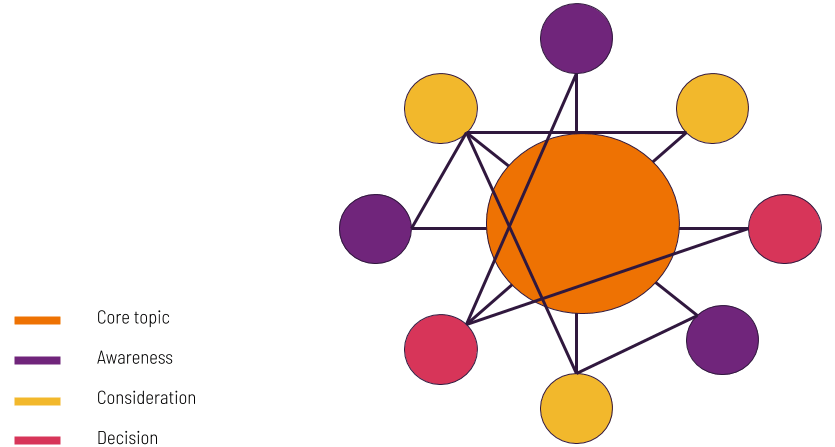If you want your website to generate targeted traffic and increase your sales, it’s important to increase your content engagement.
You don’t even need to completely redesign your website to get results. SmartWool increased its revenue by 17.1% by implementing ‘smart’ tactics.
The major challenge is getting your website to grow your business. That’s what a lot of businesses and marketers struggle with.
This post will change all of that for you. Your potential customers are just a click away, and we’ll show you how to fix the leaky website once and for all.
If you have good SEO, you can attract more traffic and get more opportunities to convert potential customers.
Actionable metrics such as time on page and bounce rate will be dramatically improved — which can help you rank higher in the search engine results pages (SERPs).
Here are the seven best ways to optimize for SEO and conversions:
1. Optimize your content pages with relevant keywords

- Best Electric Iron
- John Deere Lawn Mower Reviews
- Where to Buy Original Niche Shoes
- How to Iron a White Suit
- Why is My Dr. Dre Headphones Not Working?
- How to Clean a Vinyl Floor
- Event manager in New York
- Event manager near me.
2. Create engaging long-form content

3. Pay attention to on-page SEO

a) Site structure:
Having a well-structured and easy-to-use website is the most important On-Page SEO technique ever. You want to pass link juice from the home page to other internal pages. This also includes optimizing your title tags and meta descriptions. Relevant headlines and descriptions will increase your site’s discoverability and increase your rankings in the search results. The content itself should also be easy to read. Use charts, illustrations, images, infographics, or videos to break up chunks of paragraphs. 90% of information transmitted to your brain is mostly visual. So use visuals to hook your readers. Google will reward you with more organic traffic if your pages are well-structured and optimized with relevant keywords. You can use on-page SEO to enhance the ranking of your content.b) Interlink your pages:
Another aspect of on-page SEO is ensuring that internal links are relevant and readable. This is done by making sure that internal links are relevant to the content. According to Mangools, every page on your website should be 3 clicks away from the homepage. A major page on your site should have links from its main page. It’s also a good idea to link related blog posts to your homepage, as it will bring additional traffic to your website and raise your page authority. To make on-page SEO easier, you can use RankWatch or SEMrush. Any of these SEO tools can analyze your entire website to determine how effective it is.4. Get the word out with off-page SEO

a) Inbound links:
Off-page SEO is essential to a successful website. While you can optimize your pages — through on-page techniques — to increase your ranking, you should also build inbound links to your pages. 51% of marketers say that every page should have 2 – 3 inbound links pointing to it from a trusted website. This will allow more people to see your content. It’s important to remember that off-page SEO isn’t about guest posting; it’s also about building relationships and strategic alliances. Creating relationships with other websites, blogs, and online communities helps increase your site’s visibility, which helps boost your ranking.b) Social signal:
Social media is a great way to reach potential customers, and staying active on these networks is a great way to gain traction. Social signals are really powerful. Forums are a great source of high-quality backlinks, so you can use them as part of your off-page SEO and content strategy. One of the most important reasons to do off-page SEO is to boost your organic traffic. Organic traffic helps increase your visibility, and it’s crucial to keep up with changes in algorithms. This is why you need to monitor your backlinks carefully. Cross-reference the data you have with your organic traffic and see which channels are best for content marketing. That way, you’ll be able to optimize your off-page SEO and keep your site ahead of the competition.5. Mobile-first approach: Optimize your website for mobile users

- For a better user experience, keep the menu short and easy to find.
- Keep the content and the navigation simple and clear. In addition, you should consider the user’s range of motion when placing clickable content.
6. Improve the user experience (UX) on your website

a) Imagery
Using images on your site is a great way to break up the text and make it visually appealing. This not only improves the user experience but will also increase the amount of time people spend browsing your site.b). Easy to navigate
A good website should also be easy to navigate, with clear navigation and easy-to-use search functionality. Ultimately, this will increase the likelihood of users purchasing your products or services.c) Intuitive design
A website design that’s relatable and interactive will encourage visitors to stick around your site and will lead to loyalty and future sales. Klientboost, a PPC Ad Agency has one of the most intuitive web designs we’ve seen this year. It has clean navigation, a lot of white space on the homepage, and a catchy call to action button “Get Your Free Marketing Plan”. Moving on, one of the most effective marketing strategies is word-of-mouth. If a user is satisfied with your site, they will naturally share that positive experience with their friends and colleagues, leading to new customers. In addition to the benefits of increased sales, improving your UX will also increase your website’s ranking — as many website owners link to your resource pages willingly.7. Add a popup form to your website










